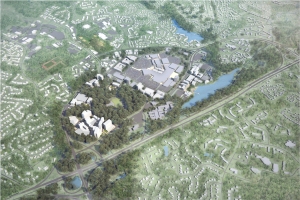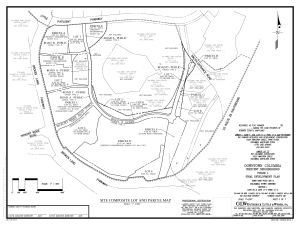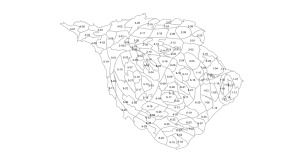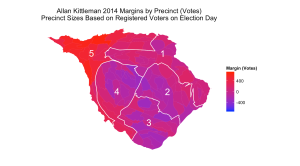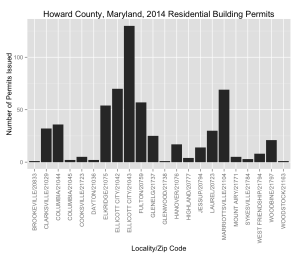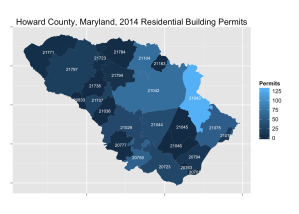tl;dr: Howard County government ups its game in providing data with a new web site opendata.howardcountymd.gov. Next stop, HoCoStat?
I’ve previously written about Howard County’s initial foray into publishing government data, the data.howardcountymd.gov web site created by the Howard County GIS division. As announced by the county and reported by Amanda Yeager at the Baltimore Sun, Howard County has launched a new site opendata.howardcountymd.gov to provide access to government data. This new site, also known as the OpenHoward portal1, can be considered as a concrete implementation of open data practices mandated by the Howard County Council (see Council Bill 32-2014) and as a down payment on County Executive Allan Kittleman’s campaign promise to create an automated system (“HoCoStat”) to “help government increase responsiveness, improve efficiency and heighten accountability”.
But enough marketing speak, what is this thing really? Briefly, the opendata.howardcountymd.gov site, like the original data.howardcountymd.gov site, is a web site that allows you to view and download various datasets relating to Howard County government activities and Howard County in general. However in other respects the new OpenHoward site goes well beyond what the previous site offers. First, the new site includes many types of data not previously available on the older site, including (to take but two examples) datasets relating to county budgets and police reports.
Second, the new site has a search facility that is extremely handy when trying to find data and datasets of interest. For example, since the renovation of Merriweather Post Pavilion has been in the news I decided to search for “Merriweather”. The search returned (among other things) datasets and records relating to police reports, reports from the Tell HoCo web site and mobile app used to report potholes, broken street lamps, and other problems, and a list of payments the county made relating to Wine in the Woods. I also tried searching for the name of the street I live on, and got a similar mix of results. I predict that this will be a popular use of the site.
Finally, the new site offers an application programming interface (API) by which independent developers can create applications that access the data in real-time. Most people won’t care about this, but (among other things) it offers local Howard County businesses and motivated individuals a way to create their own applications to add value to the underlying county data.
The opendata.howardcountymd.gov site was not built from scratch, but was instead deployed using the online service provided by Socrata, a Seattle-based private company specializing in helping governments to implement open data initiatives. Socrata’s is a “cloud-based” or “software as a service” (SaaS) offering, meaning that Howard County did not purchase software and hardware to run the site, but instead pays a ongoing subscription fee to host its data on Socrata’s servers running Socrata’s software. We’ll see in future exactly how much Howard County is paying Socrata for this service (since presumably it will show up in the “Payments to Vendors” database), but based on an independent analysis of Socrata pricing it’s likely that the cost to the county is on the order of several thousand dollars per month.
That may sound like a lot, but you have to compare it to the fully-burdened cost (i.e., including salaries, heath care, and pensions) of having Howard County employees build the site, or the cost of having a contractor develop a custom site.2 Socrata appears to be a market leader in the open data space, is growing rapidly, and has a coherent vision for future product offerings. Socrata also has other customers in Maryland at both the state and local levels, with Socrata powering the Open Data Portal used in the StateStat system, as well as open data portals and related applications for Baltimore City and Montgomery County.3
In general I think going with Socrata was a good decision for the county. The site looks pretty functional from the point of view of both beginners and more advanced users, Socrata appears to have good mechanisms for getting new datasets into their system, and the provision of an API is a plus for advanced usage. Plus Socrata also has a separate Open Performance (GovStat) product that looks as if it would be a good base on which to build the HoCoStat system.
In comparison to the pluses my concerns about OpenHoward thus far are relatively minor. First, the site could use more datasets, and more data in existing datasets. (For example, there’s no police or fire and rescue data for 2015.) However the press release is upfront about this being a “beta” site at present, so presumably more data is on the way. One major potential lack is data on Howard County schools; I presume the Board of Education and Superintendent Foose would need to cooperate to get that done, and it’s an open question as to whether such cooperation will be forthcoming.
Second, I think the conditions for access to the site and its data need to be spelled out a bit more clearly. The original County Council bill CB32-2014 stated that “All accessible data … shall be made available without copyright, patent, trademark, or trade secret, or similar regulation other than reasonable privacy, security, and privilege restrictions.” In other words, all data published on the site is presumably in the public domain with no restrictions on its use. However it would be nice if that could be spelled out more explicitly. The terms of use for the API are somewhat unclear as well: There’s a basic level of API access available by default, and more intensive usage is possible by registering and getting an “application token”. These are both provided at no charge, but it’s not clear whether there is some level or type of API access that would incur a charge to the application developer or to application users. Again, this is worth spelling out.
Finally, what will happen to the existing data.howardcountymd.gov site? Will its data be folded into the OpenHoward portal and the original site decommissioned, or will it continue to operate? I confess to a personal interest in this, since I’ve previously published analyses that pull datasets from the older site, and if the old site goes away I’d like the web links I used to be redirected to the new site.
Leaving these relatively minor concerns aside, overall the launch of the OpenHoward portal is a very welcome event, and I’m looking forward to see how it and the larger HoCoStat initiatives evolve. Our thanks should go to all those who made this possible, including to Greg Fox, Jen Terrasa, and the other members of the Howard County Council for pushing Howard County to provide open accessible data, to Allan Kittleman for his work thus far to fulfill his campaign pledges around open access, and, most importantly, to those who did the real work, Chris Merdon’s staff in the Department of Technology and Communication Services.
1. Although both the county press release and the Baltimore Sun article reference the OpenHoward name, the actual web site doesn’t use that name. Maybe they’re still finalizing the logo and related branding?
2. Based on the figures on page 190 of the Howard County FY2016 proposed operating budget [PDF], personnel costs for the Department of Technology and Communication Services (the county’s IT department) appear to be almost $100,000 per employee on average. So a hypothetical subscription fee of $8,000 a month would be equivalent to hiring one new employee.
2. The Maryland connection goes beyond what I mentioned: Beth Blauer, who headed up the Maryland StateStat project, subsequently worked at Socrata for a couple of years before leaving to head up the Center for Government Excellence at John Hopkins University.
